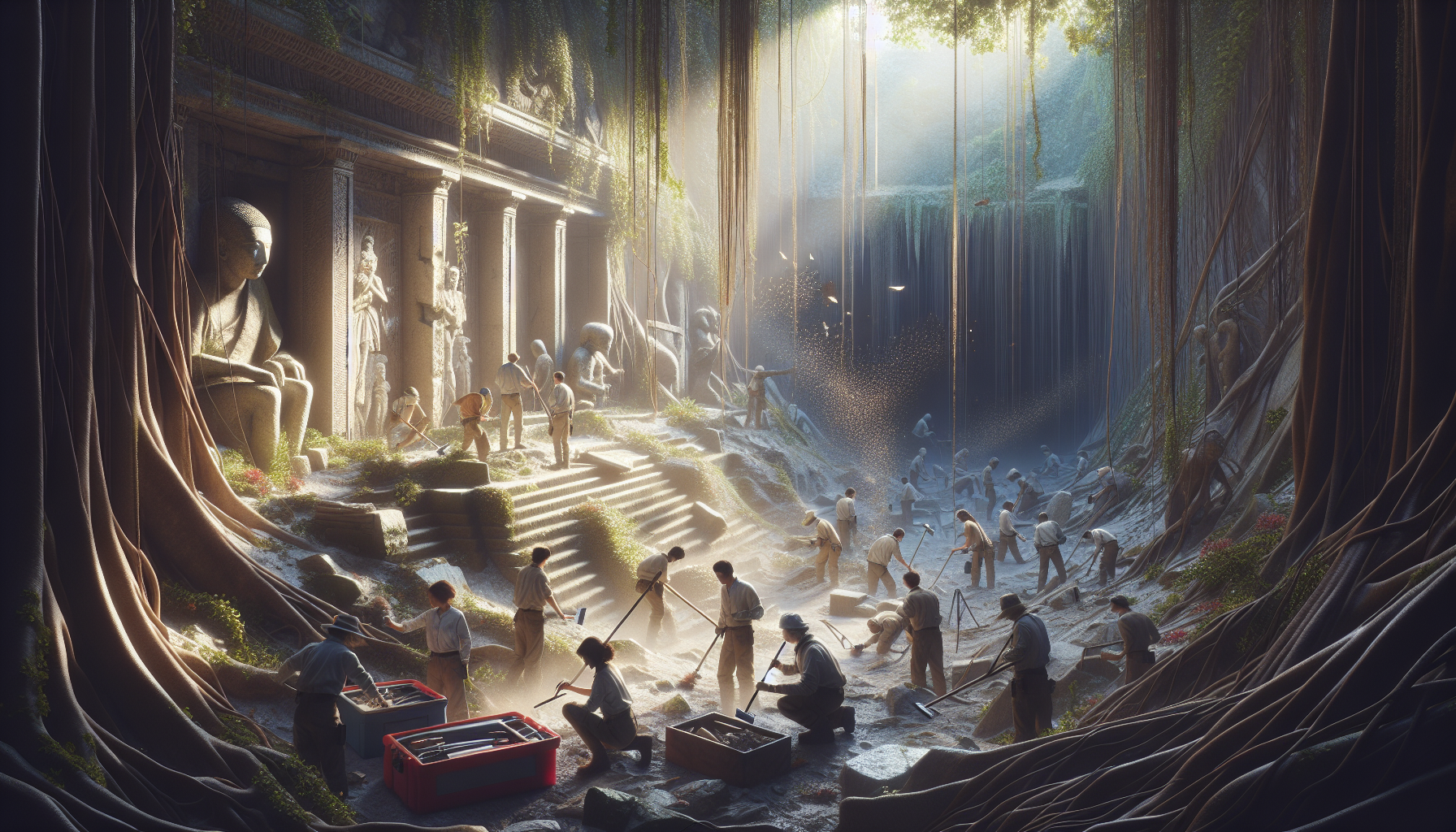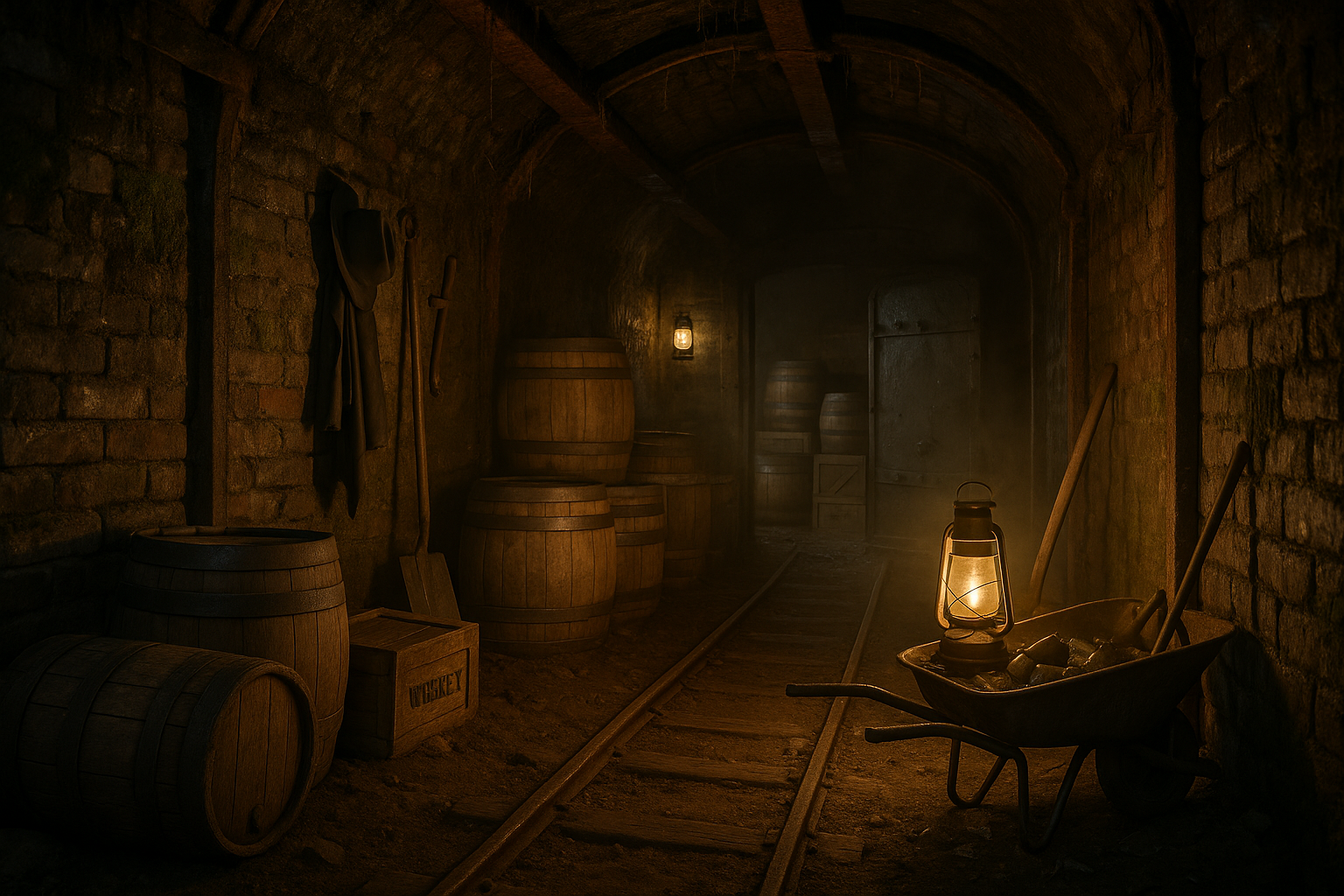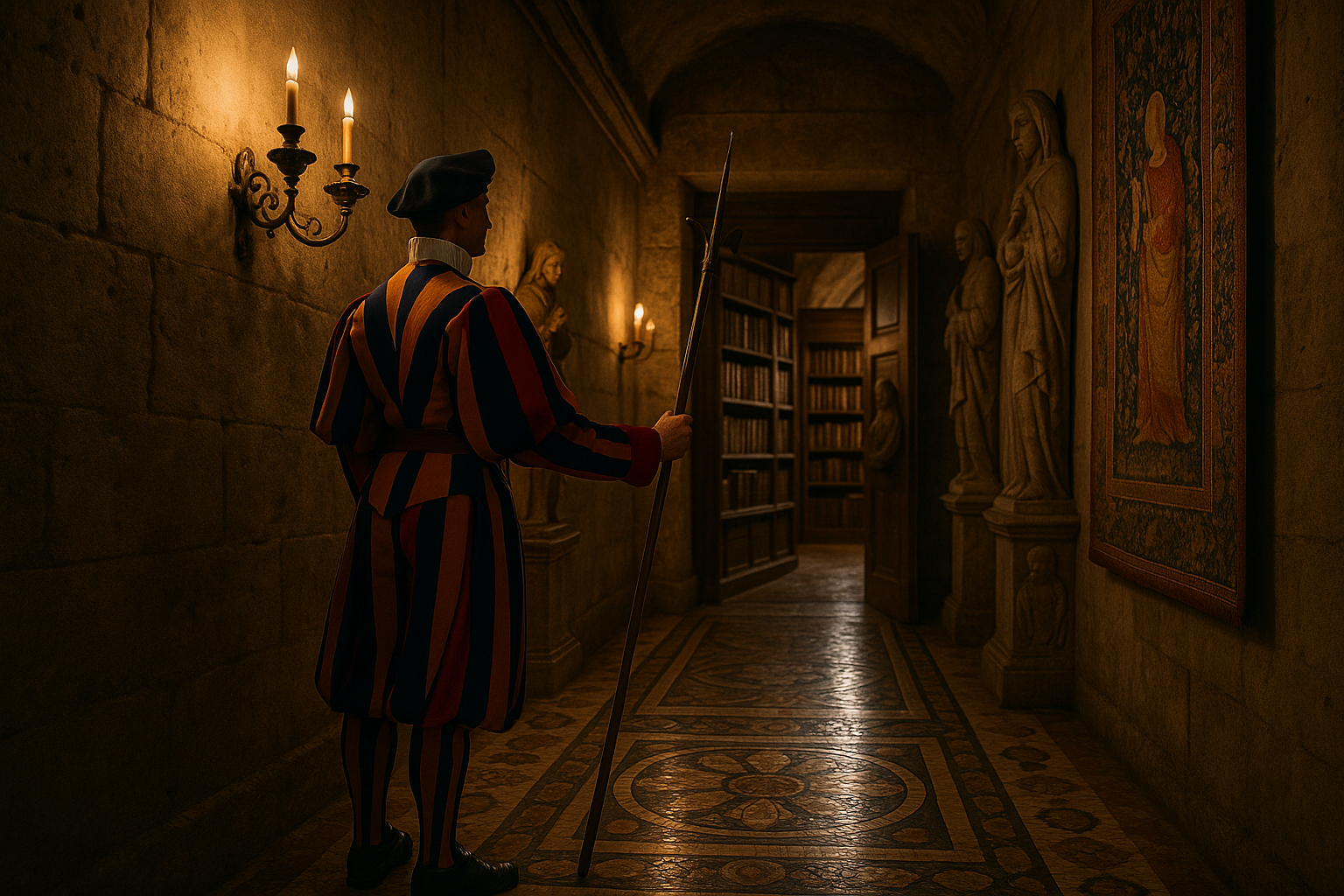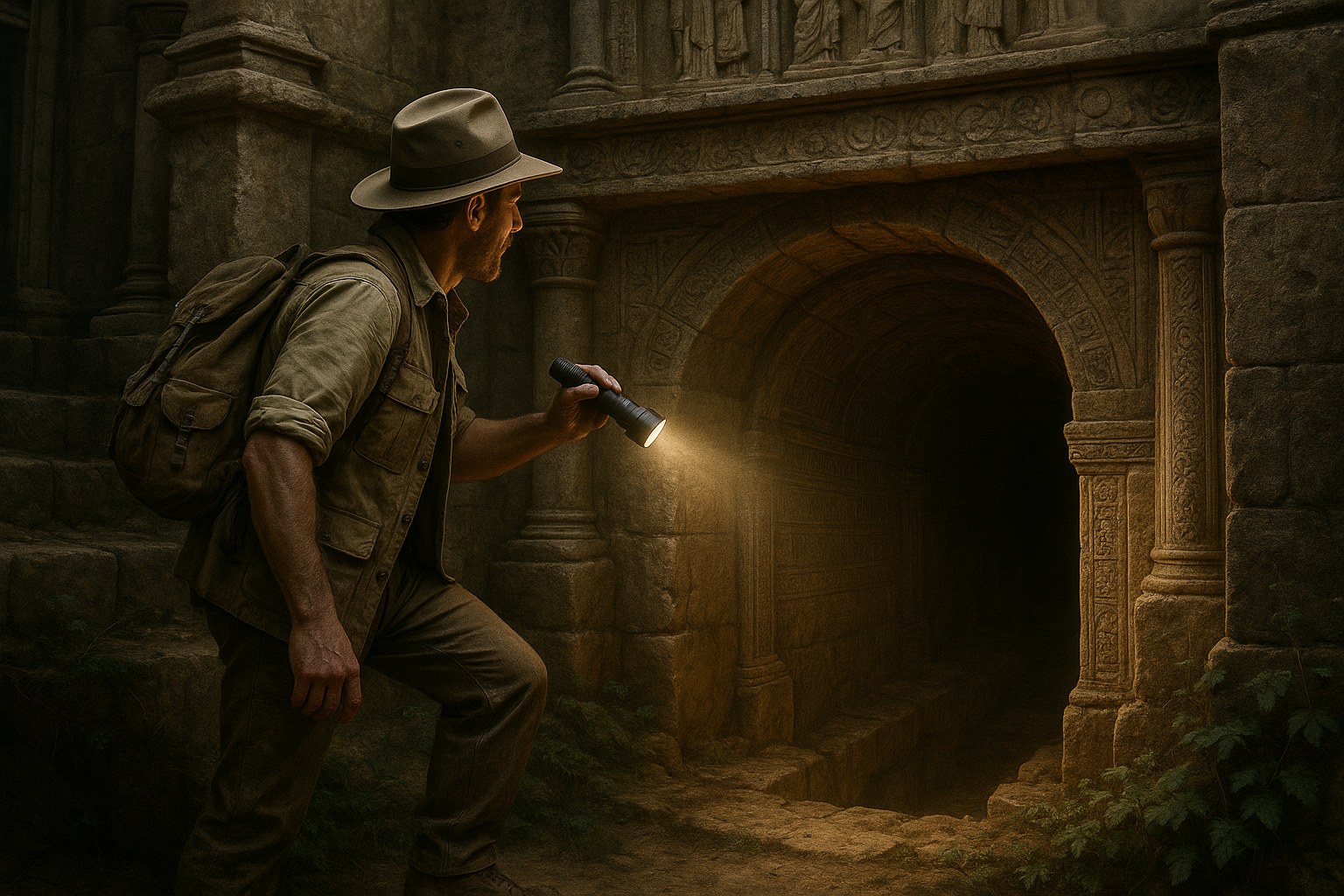In the stillness of the earth, beneath layers of soil and sediment, lie the remnants of civilizations long forgotten, waiting patiently to whisper their stories to those willing to listen. Imagine walking through a bustling city where merchants barter goods, children play in the streets, and the air is filled with the scent of freshly baked bread. Now imagine that same city suddenly silenced, buried by time and nature, its inhabitants gone but their secrets intact. This is the enigmatic allure of buried cities—places that hold a mirror to our past and offer profound insights into the lives, dreams, and challenges of those who came before us. Welcome to a journey of discovery, where we unearth the mysteries of these hidden worlds, piecing together fragments of history that have shaped our present and continue to influence our future. 🌍
From the majestic ruins of Pompeii, frozen in time by the wrath of Mount Vesuvius, to the ancient streets of Mohenjo-Daro, shrouded in the dust of millennia, buried cities captivate our imagination and challenge our understanding of human resilience. These forgotten metropolises are not mere footnotes in history; they are living museums offering a treasure trove of archaeological wonders, each artifact a clue in the grand puzzle of civilization. But what compels us to dig deeper, to brush away the dirt and reveal these ghostly towns? It’s the thrill of discovery, the promise of adventure, and the undeniable connection we feel with those who walked the earth before us.
In this extensive exploration, we will delve into the rich tapestry of stories woven into the very foundations of these ancient cities. We’ll uncover the technological marvels and cultural achievements that set them apart, examining how their inhabitants thrived and, ultimately, what led to their demise. From the architectural ingenuity of the Mayans to the vibrant cultural exchange along the Silk Road, buried cities offer invaluable lessons and serve as poignant reminders of the impermanence of human endeavor. We’ll also touch on the modern-day challenges faced by archaeologists and historians in preserving these sites, highlighting the delicate balance between exploration and conservation.
As we embark on this thrilling journey, prepare to challenge your perceptions of history and unlock the secrets of civilizations that dared to dream, build, and flourish against the odds. Through the lens of science, history, and storytelling, we invite you to immerse yourself in the saga of these sunken cities, where every stone has a story, and every discovery is a step closer to understanding the intricate mosaic of human existence. So, grab your virtual shovel and join us in unearthing the mysteries that lie beneath our feet, for in these buried cities, the past is not just preserved; it is waiting to be awakened. 🏺
Understanding the Phenomenon of Buried Cities
Buried cities have captivated the imagination of archaeologists, historians, and adventurers alike. These underground marvels hold the secrets of civilizations long gone, waiting to be unearthed and explored. What causes cities to become buried over time? The phenomenon can be attributed to various factors such as natural disasters, human conflict, or simply the slow but inexorable march of time. For instance, Pompeii was famously buried under a thick layer of volcanic ash when Mount Vesuvius erupted in 79 AD. Similarly, other cities have succumbed to the forces of nature, such as desert sands engulfing entire settlements or rivers shifting their courses over centuries, leaving once-thriving communities buried beneath sediment.
The allure of these cities lies not just in their mysterious pasts, but also in what they can tell us about the people who lived there, their culture, and their innovations. As archaeologists painstakingly uncover layer upon layer of history, they piece together narratives that offer insight into human life millennia ago. However, each buried city presents unique challenges and rewards. Some are accessible, lying just beneath the surface, while others require extensive excavation efforts.
Technological advancements have revolutionized how we discover and explore buried cities. Ground-penetrating radar and LiDAR (Light Detection and Ranging) are now standard tools in archaeological digs, allowing researchers to see beneath the surface without disturbing the site. These technologies provide a roadmap for excavations and have led to the discovery of previously unknown sites. The integration of technology in archaeology has not only accelerated the discovery process but also ensured the preservation of these fragile historical sites for future generations.
The Most Fascinating Buried Cities Unearthed
Among the numerous buried cities that have been discovered, a few stand out due to their historical significance, state of preservation, or the mysteries they still hold. One of the most renowned is Pompeii, which offers an unparalleled glimpse into Roman life frozen at a moment in time. Excavations in Pompeii have uncovered well-preserved homes, streets, and even the remains of meals left uneaten, providing an astonishingly vivid picture of daily life in 79 AD.
Another remarkable discovery is the city of Petra in Jordan, often referred to as the “Rose City” due to the color of the stone from which it is carved. Once a thriving trading hub of the Nabataean Empire, Petra was eventually abandoned and forgotten until its rediscovery in the early 19th century. Today, its stunning architecture and intricate water management system continue to draw fascination and admiration.
In contrast, the lost city of Machu Picchu, perched high in the Andes Mountains of Peru, presents a different kind of mystery. While it was never truly buried, its location kept it hidden from the outside world until its discovery in 1911. Machu Picchu is a testament to the ingenuity and architectural prowess of the Inca civilization. As you delve deeper into the stories of these cities, consider watching this insightful video on Petra: “Petra: Lost City of Stone” – Smithsonian Channel.
Technological Advances in Excavation
The modern era has seen tremendous progress in archaeological techniques, enabling the discovery and study of buried cities with greater accuracy and efficiency. One of the most significant advancements is the use of remote sensing technology. Tools like LiDAR, which uses laser light to map the ground surface, have uncovered hidden sites obscured by dense forests or urban sprawl. This technology has been pivotal in uncovering the vast network of ancient Maya cities in the jungles of Guatemala, revealing complex societies that were previously underestimated.
Additionally, 3D modeling and virtual reality have transformed the way we experience these ancient cities. By creating detailed reconstructions, archaeologists can simulate what these cities might have looked like in their prime, offering the public a chance to ‘walk’ through history. This immersive experience is not only educational but also vital for preserving these sites digitally, ensuring that even if the physical structures are lost, their legacy endures.
Despite these technological marvels, the human element remains indispensable in archaeology. The process of excavation requires meticulous attention to detail and an understanding of context that only skilled archaeologists can provide. Every artifact unearthed contributes to a broader narrative, helping us understand how ancient societies functioned and how they influenced the world we live in today. Explore more about these advancements in this captivating video: “How Technology is Revolutionizing Archaeology” – National Geographic.
Comparing Buried Cities: A Table of Key Attributes
Below is a table comparing some of the most notable buried cities, highlighting their unique features and what makes each one stand out in the annals of history. This comparison can help you appreciate the diversity and complexity of these ancient urban centers.
| City | Location | Reason for Burial | Notable Features |
|---|---|---|---|
| Pompeii | Italy | Volcanic Eruption | Preserved Roman architecture and daily life artifacts |
| Petra | Jordan | Abandonment and Erosion | Rock-cut architecture and advanced water management system |
| Machu Picchu | Peru | Unknown (Concealed by location) | Inca architectural innovation and breathtaking mountain vistas |
Take a moment to review the table and consider what makes each city unique. Each entry reveals a snapshot of human achievement and resilience in the face of environmental challenges.
The Impact of Discovering Buried Cities on Modern Culture
The discovery of buried cities has had a profound impact on modern culture and our understanding of history. Each excavation not only provides insights into ancient societies but also influences contemporary art, literature, and even urban planning. The stories of these lost cities often serve as inspiration for novels, movies, and video games, where the allure of discovering hidden worlds captivates audiences. For instance, the iconic film series “Indiana Jones” and games like “Tomb Raider” draw heavily on the concept of archaeologists uncovering lost civilizations.
Beyond entertainment, the architectural and urban planning aspects of these cities have inspired modern infrastructure. The sophisticated water management systems of Petra and the urban layouts of ancient Roman cities are studied and sometimes emulated in contemporary city planning. These ancient solutions to environmental and social challenges offer valuable lessons for modern society, particularly in sustainability and resource management.
The cultural and educational value of these discoveries cannot be overstated. Museums around the world exhibit artifacts from these cities, offering a tangible connection to the past. These exhibitions are crucial for educating the public about the richness of human history and the diverse cultures that have shaped our world. By engaging with these artifacts, people can appreciate the complexity of human civilization and the continuous thread of innovation and adaptation that runs through our shared heritage.
Conclusion
Uncovering the enigma of buried cities is akin to peeling back the layers of time, revealing narratives that have long been obscured beneath the earth’s surface. Throughout this article, we have embarked on a journey through history, exploring the fascinating tales of civilizations lost and found. We’ve delved into the reasons these cities were buried, the methods used to excavate them, and the incredible insights they provide into our past. 🏺
Initially, we examined the intriguing causes behind the burial of these cities. Natural disasters such as volcanic eruptions, earthquakes, and floods played a significant role in swiftly entombing entire civilizations. The infamous eruption of Mount Vesuvius, which sealed Pompeii in a time capsule of ash, is a testament to nature’s power to both destroy and preserve. Human actions, whether through warfare or the intentional covering of structures for preservation, also contributed to this phenomenon, adding layers to the complexity of our archaeological quests.
The next step in our exploration was understanding the meticulous methods employed by archaeologists to uncover these hidden worlds. Techniques have evolved from rudimentary tools to sophisticated technologies such as ground-penetrating radar and 3D reconstruction, which have revolutionized our ability to explore without disturbing the fragile remains. The painstaking work of excavation, cataloging, and analysis requires a blend of scientific precision and creative intuition, as experts work to piece together the past from fragments of evidence.
Our journey through these buried cities illuminated the invaluable insights they offer into ancient societies. From the everyday lives of citizens, captured in the frescoes of Roman villas, to the grandeur of once-thriving metropolises like Machu Picchu, each discovery adds depth to our understanding of human history. These cities reveal the ingenuity, artistry, and resilience of our ancestors, challenging modern assumptions and inspiring future innovations.
Moreover, these discoveries underscore the importance of preserving our cultural heritage. As we recover and study these remnants, we not only honor the achievements and struggles of those who came before us but also safeguard this knowledge for future generations. Organizations and governments worldwide are increasingly recognizing the need to protect these sites from threats such as urban development and climate change, ensuring that they remain treasures of human history.
The relevance of exploring buried cities extends beyond mere academic interest. It is a poignant reminder of the transient nature of human endeavors and the enduring power of knowledge. In an age where technology and information dominate, there is profound wisdom in looking to the past for guidance and inspiration. Understanding the rise and fall of ancient cities can offer insights into contemporary challenges, from urban planning to environmental stewardship.
As we conclude our exploration, the mysteries of buried cities remind us that there is still much to learn and discover. They beckon us to remain curious, to question, and to seek understanding in the echoes of history. The tales unearthed from these ancient sites are not just stories of the past but narratives that continue to shape our present and future.
We encourage you to share this journey with others. Discuss what you’ve learned, reflect on the implications, and consider how these historical narratives can inform your perspective on modern issues. If you found this exploration inspiring, share it with friends or colleagues who may also appreciate the insights unearthed from the depths of time. Together, we can foster a deeper appreciation for our shared heritage and the lessons it holds for all of humanity. 🌍
For further reading, consider exploring resources such as the Archaeological Institute of America’s website (https://www.archaeological.org/) and the World Monuments Fund (https://www.wmf.org/), both of which offer extensive information on archaeological efforts and heritage preservation.
In closing, let this be an invitation to continue your own explorations, to remain vigilant stewards of history, and to celebrate the rich tapestry of human experience. The secrets of buried cities are waiting to be discovered, each one a testament to the indomitable spirit of humanity and a beacon guiding us toward a more enlightened future. 🏛️

Toni Santos is a visual storyteller and artisan whose work explores the quiet power of what lies beneath. With a deep fascination for subterranean and hidden architecture, Toni uncovers the layers, voids, and forgotten spaces that shape our built environment from the shadows.
His art is a journey through the unseen — from ancient underground chambers to sealed passageways, service tunnels, and foundations buried in time. Each creation tells a story of silence, secrecy, and structure — revealing how absence and concealment can be just as meaningful as what’s visible above ground.
Whether working through visual compositions, architectural studies, or symbolic handcrafted pieces, Toni captures the soul of hidden spaces. His work bridges art and archaeology, blending design with discovery. Trained in visual design and traditional techniques, Toni creates with intention. His pieces don’t just depict — they interpret, inviting viewers to rethink what space, memory, and architecture mean when they’re hidden from view.
As the creative force behind Vizevex, Toni shares this perspective through curated visual narratives, symbolic collections, and interpretive essays that give voice to the quiet geometries beneath our feet.
His work is a tribute to:
The mystery of spaces built to be forgotten
The symbolism embedded in foundations, voids, and passageways
The timeless connection between human intention and hidden structure
Whether you’re an artist, an urban explorer, or someone fascinated by the unseen frameworks that support our world, Toni invites you into a realm where architecture becomes myth — one corridor, one layer, one buried story at a time.





